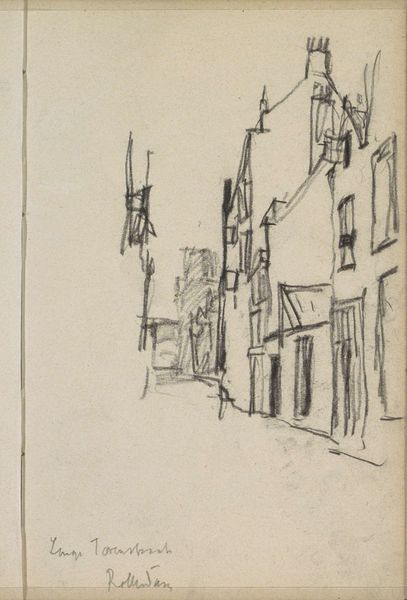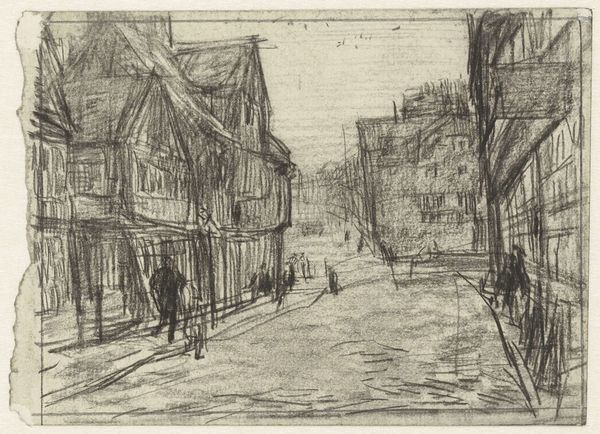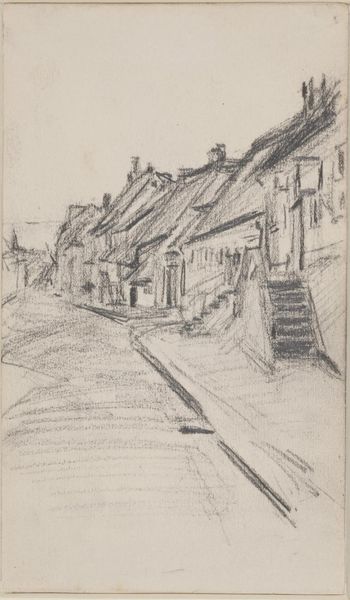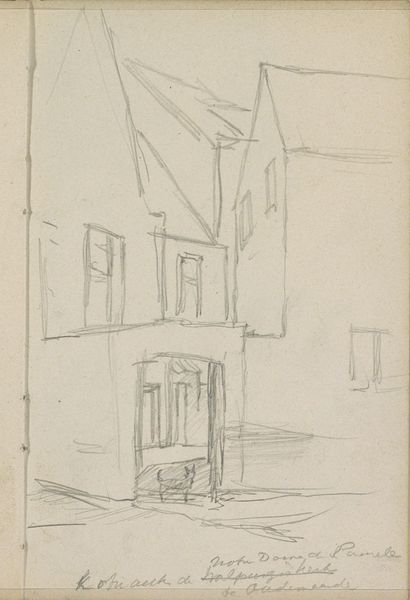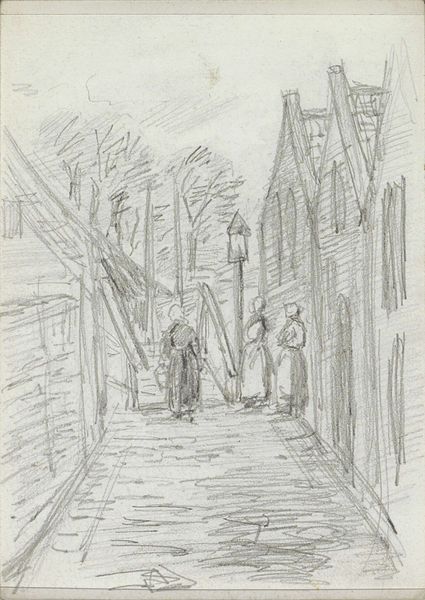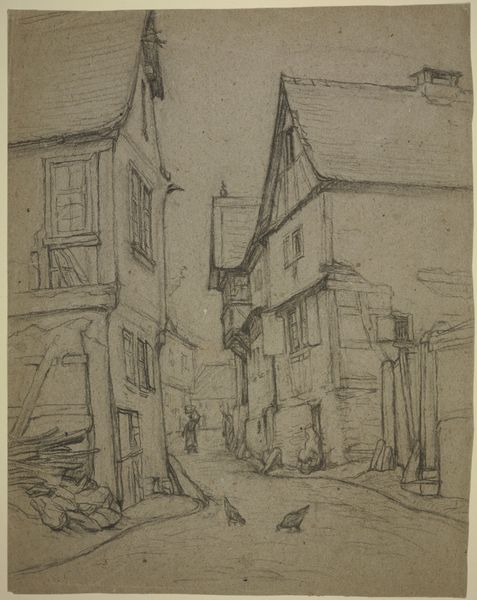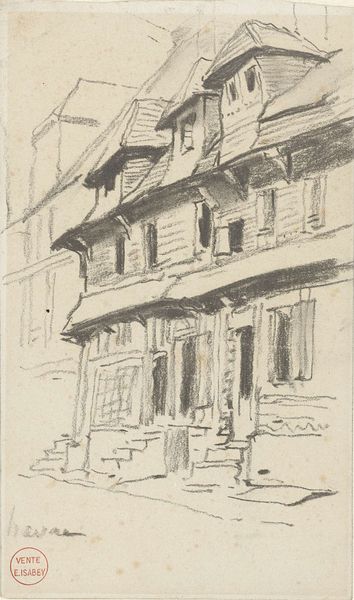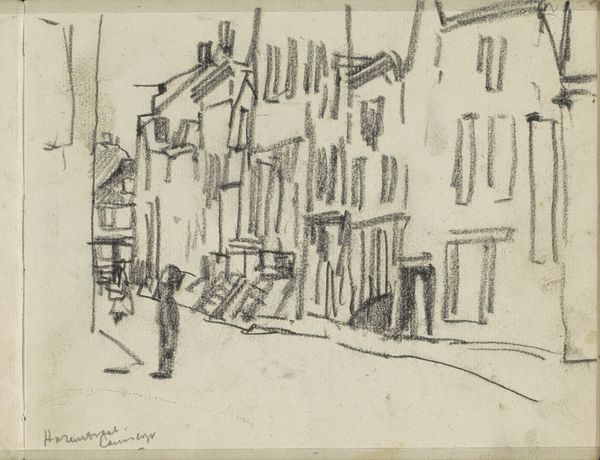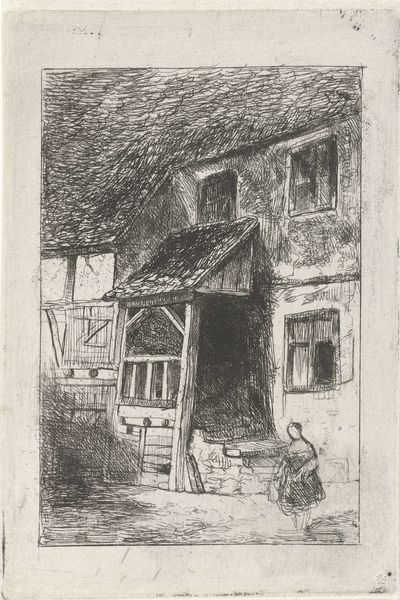
drawing, pencil
#
drawing
#
pencil
#
cityscape
#
realism
Dimensions: height 303 mm, width 278 mm
Copyright: Rijks Museum: Open Domain
Editor: This drawing, titled “Straatje in een vissersdorp” – or "Street in a Fishing Village" – is by Albert Baertsoen, probably made sometime between 1876 and 1922. It’s a pencil drawing, and it reminds me of old photographs, capturing a slice of life. What stands out to you in this piece? Curator: What a deceptively simple scene, isn't it? The street, the houses, the figure in the doorway - each a carrier of meaning. To me, this isn't just a depiction of a village street; it's a visual echo of generations past, their lives intertwined with the sea. Consider the textures; the rough strokes defining the buildings evoke a sense of weathering, resilience. This is a space marked by time and tradition. How does the solitary figure impact your reading of the drawing? Editor: I see what you mean. I hadn’t thought about it that way initially, but now I notice the person is the only really *round* shape, amidst all the rectangles. I guess she really *grounds* it. Curator: Precisely! The figure offers us a connection to the domestic, the human scale within this environment. Their presence infuses the scene with stories – of community, of daily rituals, of unseen narratives unfolding behind closed doors. It is this convergence of structure and inhabitant that builds this image's enduring, relatable power. Do you find any modern parallels in your experience? Editor: Maybe, like when I see a neighborhood that feels like my grandparents' town, even though it's in the city. I get a feeling I can't really explain. It's almost a memory of something I never actually knew. Curator: Exactly. It reminds us of what endures. A poignant reminder that places hold memories, and art helps us unlock them. Editor: That’s such a powerful thought. This drawing feels much deeper now. Thanks for pointing that out!
Comments
No comments
Be the first to comment and join the conversation on the ultimate creative platform.
